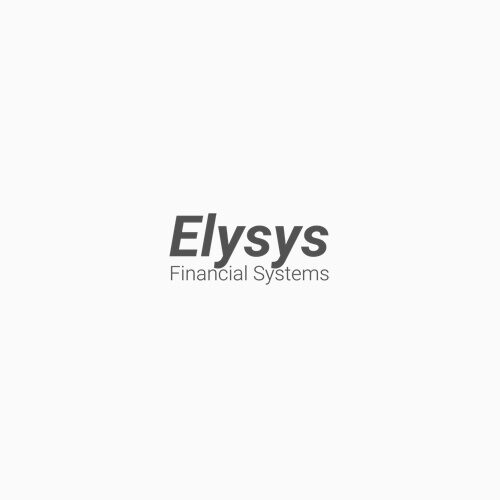When can you call yourself an expert? That’s a question I’ve been mulling over lately. I’m not an AI engineer or someone who’s spent decades inside a family office. But by working closely with families and advisors as they select new technology, I’ve become a kind of advisor myself. And when you speak to two or three new families, MFOs, or HNWIs each week, you learn fast.
I’ve sat in on more wealth tech demos than I can count: startups, legacy systems, and everything in between. I’ve seen the platforms from the inside, asked the awkward questions, and witnessed how real families think about the tools they use. And as with everything else, lately, AI is the spoken topic.
It’s about time I started sharing what I learned with the world of family offices. So here’s my take on where AI is genuinely adding value in wealth tech and where it’s simply not the game-changer it’s sometimes marketed to be.
This isn’t new, but it feels new
Let’s get one thing straight: AI and large language models (LLMs) didn’t enter wealth tech yesterday. Some platforms were already experimenting with them back in 2018, but the tech was buried deep in the backend, quietly improving document parsing or data processing in ways only engineers noticed.
Since then, the underlying technology has become radically more advanced. However, the real shift I’m seeing is in how accessible and visible it’s become. AI is no longer just a behind-the-scenes engine; it’s starting to show up in interfaces, dashboards, and tools that end users actually touch.
It feels like we’re in AI’s adolescence: no longer an experiment, not yet fully mature. There’s more curiosity, more ambition, and more experimentation. Family offices aren’t diving all in, but they’re testing, poking, and trying to understand what’s worth their time, and more importantly, what isn’t.
We rounded up a few companies that you might find interesting.
Three real-world use cases where AI is actually helping
From what I’ve seen across dozens of demos and conversations, here’s where AI is already doing meaningful work for wealth platforms, and by extension, for family offices:
1. Document processing: Making paperwork suck less
If you’ve worked with a family office, you know there’s no shortage of paperwork: capital call notices, K-1s, LP reports, bank statements, scanned PDFs, and emails with Excel attachments.
Several platforms now use AI to process and extract data from these sources automatically. I’ve seen demos where a PDF gets uploaded and, within seconds, investment data is pulled out, matched to the right entity, and ready to flow into reports.
One platform showed how it could parse a capital call document, extract dates, amounts, and fund names, and sync the data without any manual entry. Another auto-tagged scanned documents with relevant metadata using a mix of OCR and machine learning.
It’s not glamorous, it’s incredibly valuable and a huge time saver.
2. Data structuring: From chaos to clarity
Family office data tends to be scattered and inconsistent. One report might call an investment “Fund A LP,” another calls it “A Capital Fund,” and a third refers to it as “ACF.” Humans can figure it out, but it’s a recipe for errors.
AI is starting to solve this in the background. I’ve seen tools that use entity resolution algorithms to unify naming conventions, auto-categorise assets, and even detect discrepancies across data sources. It’s the kind of work that no one notices when it goes well, but causes major headaches when it doesn’t.
The takeaway? AI is as good as the data it processes, but we are getting closer and closer to enhanced and refined analytics through AI. In other words, owning clean and reliable data is the most important thing; data structuring will start solving itself.
3. Natural language interaction: Talking to your portfolio
This is the demo moment that gets people leaning in: “Ask your portfolio anything.”
I’ve seen platforms where users can type (or say) something like:
“Show me all private equity funds with IRRs above 15% invested after 2020.”
And the system returns a clean, visual breakdown, no dropdown menus, no filter setup, no guesswork.
It doesn’t always work perfectly. Sometimes names get misinterpreted or numbers misread. But when it works, it’s a glimpse into a future where interacting with your financial data feels more like a conversation than a spreadsheet.
The bigger shift: AI that feels human
These examples might sound flashy, but they’re actually pretty pragmatic. What they all have in common is a move away from buried complexity and toward usable simplicity.
The technology hasn’t suddenly become magical. What’s changed is the interface. AI isn’t just doing things behind the scenes; it’s surfacing in ways that make the work feel smoother, smarter, and more natural for the user.
That’s what’s really exciting: a shift from “look what the system can do” to “look how easy this feels.”
What’s next: On-prem models, custom workflows, and the curious few
There’s one question that keeps coming up:
“Now that LLMs are so powerful, and in some cases open-source, does it make sense to run them in-house?”
For years, the answer was no. On-premise models were too expensive, too complex, and required too much ongoing support. But now? With the right setup and clean data, it’s starting to look more viable. Maybe even preferable for some.
That said, I expect and understand if most family offices will still rely on trusted platforms that embed AI in a secure and user-friendly way. But we’re already seeing the early adopters get curious.
We’ve talked to families who are building their own AI flows with tools like Make.com, N8N, or Agentic agents, trying to connect data sources, automate responses, or personalise how they interact with reports.
It’s not mainstream yet, but it’s a clear sign that some family offices want more than prepackaged intelligence. They want flexibility, control, and customisation.
So… Am I an AI expert now?
Still no. But I have seen what works, what’s hype, and what might actually change how families use technology.
To me, expertise isn’t just about technical depth, it’s about curiosity, observation, and sharing what you notice. And if you’re trying to understand how AI fits into the family office landscape, start by looking at how platforms handle documents, data, and interaction. That’s where the real evolution is happening.
And if you’re further along, or experimenting on your own, I’d love to compare notes.










